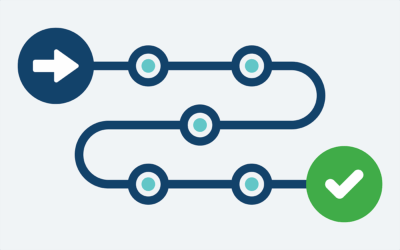The best consultative selling questions help you move beyond surface-level needs to understand the deeper motivations, constraints, and factors that will ultimately drive a prospect’s buying decision.
Using a consultative selling strategy and asking open-ended questions can improve your results in five important ways.
1. Consultative Selling Questions to Understand Customer Needs
By helping you accurately probe for the right answers, consultative sales questions help you gain a deep understanding of your customer’s needs, challenges, and goals.
This understanding allows you to tailor your offering and demonstrate how your product or service can address their specific pain points.
Asking the right types of questions uncovers valuable insights and builds a stronger connection with the customer.
Consultative Selling Example Questions:
- What challenges are you facing that aren’t being addressed right now?
- What would you say are the biggest obstacles preventing you from reaching your goals?
- If you could wave a magic wand and fix one thing about your current situation, what would it be?
- What frustrations do you hear most often from your team or customers?
- How is this challenge impacting other areas of your business?
2. Consultative Selling Questions to Build Trust and Rapport
Asking thoughtful and relevant sales questions shows that you genuinely care about your customer’s success. It demonstrates your commitment to finding the best solution for their unique situation.
By actively listening to their responses and engaging in meaningful sales conversations, you build trust, credibility, and rapport, which are essential for establishing long-term customer relationships.
Consultative Selling Example Questions:
- Can you walk me through a typical day/week/month in your role?
- What would success look like for you in this area?
- If we could solve this perfectly, how would that change things for you?
- What are your main objectives for the next year regarding [relevant area]?
- How does this fit into your broader strategic goals?
- What would achieving this mean for your team and organization?
3. Consultative Selling Questions to Customize the Sales Approach
Different customers have different priorities, preferences, and decision-making processes. By asking the right questions, you can gather information that allows you to customize your sales approach accordingly.
This helps you present your product or service in a way that resonates with the customer, highlighting the specific benefits and features that are most relevant to them.
Consultative Selling Example Questions:
- What does your current process look like for [relevant area]?
- How are you currently handling [specific challenge/need]?
- What’s working well with your existing approach, and what isn’t?
- What systems or tools are you using right now, and how satisfied are you with them?
- Who else would be involved in evaluating a solution like this?
- What does your typical decision-making process look like for investments of this size?
4. Consultative Selling Questions to Overcome Objections
Consultative sales questions enable you to anticipate and proactively address potential objections or concerns. This helps in overcoming objections and increasing the chances of closing the sale.
By understanding the customer’s hesitations, doubts, or reservations, you can provide accurate information, clarify misunderstandings, and present compelling arguments that alleviate their concerns.
Consultative Selling Example Questions:
- What happens if you don’t address this issue in the next six months?
- How is this problem affecting your team’s productivity or morale?
- What’s the cost of continuing with the status quo?
- What criteria will be most important when choosing a solution?
- How do you typically measure success for initiatives like this?
- What would need to happen for this to become a priority?
5. Consultative Selling Questions to Guide the Sales Process
Probing sales questions act as a guide throughout the sales process. They help you navigate the conversation, uncover essential information at each stage, and identify the appropriate next steps.
By asking the right questions, you can lead the customer through a structured journey that aligns their needs with the value your product or service offers.
Consultative Selling Example Questions:
- How does this challenge impact your customers’ experience?
- What opportunities might you be missing because of these constraints?
- What kind of investment range are you considering for addressing this?
- When would you ideally like to have a solution in place?
- What’s driving the timeline for making this decision?
- How do you typically approach budgeting for solutions like this?
- What would delay or accelerate your decision-making process?
Recommendations for Adopting Consultative Selling
Consultative selling requires unique skills and a sales process that some teams may not possess. Here’s some practical advice for sales leaders and sales enablement professionals implementing a consultative sales approach:
Shift the Mindset First
Often, the biggest hurdle to adopting a consultative approach is getting sellers to stop pitching and start listening. Many salespeople feel uncomfortable with silence or think they need to immediately demonstrate product knowledge.
Help your team understand that asking questions and truly listening builds more credibility than rattling off features. Frame it this way: Prospects don’t care how much you know until they know how much you care about solving their specific problems.
Invest in Question Development and Practice
Don’t just give your team a list of questions and expect magic to happen; work with them to develop questions specific to your industry and typical customer challenges.
Role-play different scenarios regularly. Record calls and review them together, focusing on the quality of questions asked and whether the seller truly understood the prospect’s situation before presenting solutions.
Redefine What Success Looks Like
Traditional sales metrics often reward activity over insight. Consider tracking metrics like discovery call quality, percentage of needs identified before presenting, or how well sellers can articulate a prospect’s business case.
Celebrate sellers who walk away from poor-fit opportunities just as much as those who close deals.
Address the “Urgency vs. Patience” Challenge
Sellers often feel pressure to move quickly through the sales process, but consultative selling requires patience to fully understand before proposing.
Help your team understand that thorough discovery actually accelerates the sales cycle by building stronger cases and reducing future objections. Teach them to resist the urge to present solutions the moment they hear any pain point.
Lead by Example on Customer Calls
Join calls not to take over, but to model the behavior you want to see. Demonstrate how to dig deeper into responses, how to use silence effectively, and how to connect different pieces of information to build a comprehensive understanding of the prospect’s situation.
Create a Discovery Framework
Give your team structure without being overly rigid. Develop a framework that ensures they cover all critical areas while allowing for natural conversation flow.
This might include understanding the customer’s current state, desired future state, decision-making process, and success criteria, and the consequences of inaction.
Train on Active Listening Skills
Many sellers think they’re listening when they’re actually just waiting for their turn to talk. Teach techniques like summarizing what they’ve heard, asking follow-up questions that reference earlier comments, and taking notes that demonstrate they’re processing information rather than just collecting it.
The goal is creating sellers who become trusted advisors rather than product pushers. This requires patience from leadership, but the payoff is stronger relationships, higher close rates, and more predictable revenue growth.
Find out how sales training from The Brooks Group can help your sales team learn how to sell consultatively.




